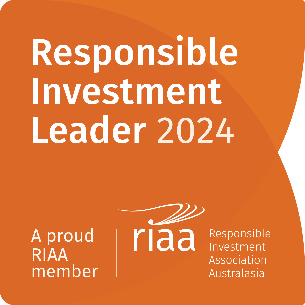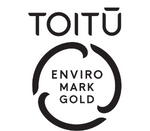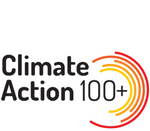The Great IPO Rush

3rd November 2021: This month’s interest piece has been written by Devon’s Head of Retail, Greg Smith.
While the initial public offering market has been subdued again this year in New Zealand, the same cannot be said across the Tasman. IPO activity has run red hot in Australia, with a steady wave of new companies of all shapes and sizes coming to market so far in 2021. This trend has shown no sign of letting up, with the December quarter likely to be one for the record books. The final three months of the year will likely have seen at least seven floats of A$1 billion or more, raising a total of more than A$10 billion.
Rampant IPO activity has not just been confined to Australia and has very much been a global theme this year. While the majority of capital raisings in 2020 were about strengthening balance sheets in the wake of the pandemic, this year has been much more about companies raising new capital through IPOs to fund growth.
Buoyant equity markets, investor optimism around the post-Covid economy and earnings outlook, and elevated valuations along with low bond yields have all conspired to ensure that this ‘IPO rush’ has been a global phenomenon. Global accounting firm EY reports that the number of global public offerings had already exceeded last year’s total by the end of the third quarter, and in fact reached a 20-year high.
Worldwide, there were 547 IPOs in the third quarter alone, representing US$106.3 billion in transaction volume, taking the total through the first nine months of the year to some US$330 billion. Raisings have been the most prolific in the US (nearly US$100 billion in total year to date), but activity has been strong across the UK, Europe, and throughout Asia.

Source: EY
The booming level of IPOs has a clear correlation with the strength of equity markets this year, with a ‘risk-on’ theme increasing the appetite for fresh investment opportunities. The rise of the retail investor and overall share market participation during the pandemic, on the back of the stay at home thematic, and widespread use of online trading platforms, has likewise served as a powerful tailwind to demand for IPOs.
The supply-side has responded accordingly. Robust equity markets have made initial public offerings a very attractive option to many shareholders of as yet unlisted companies that are looking for an exit or liquidity event. Elevated valuation levels have bolstered the case for going to the public equity market as opposed to a straight sale. Closed borders have also presented a challenge to M&A activity, restricting the level of face-to-face meetings between executives as well as other due diligence activities. That said, levels of merger and acquisition activity generally have been rampant this year - refer to our August article titled ‘M&A Mania’ by clicking here.
Given that technology stocks have led many markets higher for long period this year, it probably should not surprise that it has also been the dominant sector in terms of IPOs. The work-from-home thematic has turbo-charged demand and the prospects for of a host of technology offerings, which has driven the need for expansion capital. Retail investors have been highly receptive to ‘tech stories’ and elevated market valuations have prompted many founding shareholders to join the IPO bandwagon. Globally, healthcare, industrials, consumer stocks and materials have also been strong in terms of IPO deal-making.

Source: EY
Looking at the life-cycle stage of companies coming to market is interesting. Globally, there have been plenty of relatively early stage and new age companies looking to leverage a wave of investor optimism, secure capital (and a liquidity event) amidst tailwinds from the stay-at-home boom and other modern thematics. Two clear examples in the US include discount brokerage firm Robinhood, and crypto-currency exchange Coinbase.
However, long-established blue-chip firms have been casting the IPO net as well, and taking advantage of pent-up investor demand. Global auto manufacturer Volvo surged 22% last Friday on its first day of listing, giving it a market valuation of around US$23 billion. The raise will help to underpin the carmaker’s electric vehicle ambitions, and secures a partial exit for shareholder Chinese car manufacturer Geely.
Closer to home the Australian IPO market has been equally diverse, and is going from strength to strength. The last three months of the year will likely prove to be the busiest period of major floats on the ASX ever, even exceeding the heady days of late 2013 (albeit many of those listings during that period involved spin-out or dual listings).
The ‘big end of town’ has been especially active, with seven companies worth more than A$1 billion having listed on the ASX already this year, including Latitude Financial Services, PEXA Group and Woolworths spin-off Endeavour Group.
In late October asset manager GQG Partners became the eighth A$1 billion+ company to list on the ASX, and is the largest so far this year. The US headquartered business (which claims a number of Australian links) has around US$86 billion in client assets and was valued at A$5.91 billion after raising A$1.187 billion. Early November saw the ninth A$1 billion+ listing with Judo joining the ring, raising A$653 million, and giving the ‘neo-bank’ a market capitalisation of A$2.3 billion.
The listings of both GQG and Judo were notable in that both floats were heavily ‘corner-stoned,’ with a substantial amount of the raises (A$800 million for GQG and A$515 million for Judo respectively) locked in ahead of time. This could well speak to the fact that companies are becoming conscious over the high number of listings, and that investors are being spoilt for choice.
The swathe of IPOs across the Tasman is coming thick and fast, with Siteminder, a hotel booking software company the next cab off the rank and set to list in mid-November, pegged at a value of around A$1.4 billion.
Many others are waiting in the wings are waiting in the wings, including services firm Ventia, which is jointly owned by construction group CIMIC and US private equity manager Apollo. The float should be well supported given Ventia’s leverage to rising infrastructure spend in Australia and a relatively modest valuation. Ventia maintains key infrastructure across a multitude of key sectors, and is raising A$1.1-$1.2 billion, making it one of the three biggest IPOs in Australia this year. An earnings multiple of 12.5-14 times, and a prospective yield of 5.4-6% for FY22 looks likely to resonate positively with the market.
Unemployment and disability services group APM is another aiming to list before the year is out, with a valuation exceeding A$2 billion. In addition, ComfortDelGro (Australia’s second largest private bus operator) recently kicked off marketing, and is expected to be valued above A$1 billion.
One name that will not be lighting up the boards is SG Lottery. The global lotteries services business is going the other way to many other names, with US owner Scientific Games instead choosing to sell the business to investment manager Brookfield for US$6 billon. This would have been the biggest IPO in Australia since Medibank Private in 2014.
Keeping up with all the activity in the IPO space is no mean feat with new listings coming to light just about every other week. The above names are just the large cap side of the equation. Further down the boards, the small-to-mid-cap space has been a hot-bed of activity. The ASX overall is on track for the most listings in a year since 2007.
The NZX in comparison has been practically idle in terms of IPO action since the listing of My Food Bag earlier this year. However, there will be some cause for cheer shortly with the dual listing of home-grown Vulcan Steel. The Australasian steel supplier, which has secured around A$220 million in cornerstone bids, is looking to raise A$371.6 million for a valuation of around A$930 million. Given the dearth of kiwi listings this year, investor appetite should be solid, supported by Vulcan being priced on a relatively modest multiple of around 13 times earnings.
Kiwi investors salivating over two listings in the telco sector (recall Infratil snapping up Vodafone NZ a couple of years ago) will have to wait a while longer it seems. The IPOs of 2degrees and Vocus NZ (which was being rebranded as Orcon) are on hold as the two companies contemplate a merger. If a tie up does go ahead this could still make for the listing of a much bigger telco opportunity down the track, and potentially one that would be well received by Mum and Dad investors.
The rise of the retail investor during the pandemic would likely ensure there would be keen interest in any float of trading platform Sharesies. The company recently raised $50 million in a funding round (at a $500m valuation), and management has suggested that a dual listing would be pursued at some point in the future.
Another kiwi-born name has listed this week, albeit offshore, in the form of Allbirds. There was much fanfare around the IPO of the eco-friendly sneaker company and the shares got off to a flyer on their initial listing on the Nasdaq. The sustainability angle, along with the brand’s cult status, has clearly resonated with investors.
In the here and now though, most of the IPO action is occurring offshore and this is likely to remain the case. The sheer volume of listings and the ongoing IPO frenzy however raises some other important considerations for investors.
For one with the supply of IPOs continuing to surge there are signs that these it is increasingly becoming a ‘buyer’s market.’ While levels of investment liquidity are high there is also not an infinite amount of money on the side-lines, or time, to go around. Institutional investors are increasingly becoming more discerning with both, and increasingly looking to back only those that stack up from a ‘story’ but also a pricing perspective. The concept of applying an IPO discount also appears to becoming much more common. This appears to be the case with Ventia which looks set to be coming on at a valuation discount to listed rival Downer.
Retail investors also need to be wary that given an ever-growing pool of listings it is even more paramount to sort the ‘wheat from the chaff’ so to speak.
Certainly, there can be some warning signals heeded from overseas. In the US, rising US Treasury yields and a crowded IPO market are weighing on returns from new issues. Over half of the companies that listed this year are currently trading below their IPO price, according to Dealogic. These include fashion resale platform Poshmark, Chinese ride-hailing app Didi Chuxing, real estate broker Compass and doughnut chain Krispy Kreme.
A poster child for the exuberance of the IPO market in the US this year has been the rise of SPACS (special purpose acquisition companies). These ‘blank cheque’ companies typically raise capital in a traditional IPO and then sit idle on the market before merging into a target acquisition. They accounted for more than two-thirds of the proceeds raised in the US IPO market in the first quarter. Their share has fallen to about 40% in the third quarter, and appetite for these types of listings are continuing to fade.
There is a similar situation in Europe which has also witnessed a listing extravaganza. More than 40% of the largest deals in Europe this year are now trading below their IPO prices, with investors turning cautious on highly valued companies. The gap between what is ‘hot and what is not’ is widening, with IPOs worth billions of dollars called off in recent weeks.
The common theme here is that investors are becoming more ‘picky,’ and this should not surprise given the huge sums that are being raised across the IPO market. A point to note also is that investors are becoming discerning even while markets are running hot. A bout of market volatility could conceivably present a much stiffer challenge for lower quality listings to get away successfully.
Another factor for IPO investors to consider is that valuations generally are being conducted at elevated multiples from a historical perspective. While we are not back at the levels of dot-com exuberance in 1999, valuations across several sectors are high. If bond yields rise further on the back of an acceleration in inflationary pressures, already lofty valuation bars will effectively be raised even further. This could see corrective action play out, particularly in some of the more exorbitantly priced names.
In summary, investors eager to be involved in the IPO market are clearly spoilt for choice, and are likely to remain so in the coming months. IPOs are however not a path to instant riches. There are some companies coming to market with some great ‘stories’, and palatable valuation multiples to boot. However, there will be plenty of others that may not be in in this camp, and investors should be cognisant of the risks.
As always the devil is in the detail, and conducting careful due diligence, including assessing the motivation for the listing, and other factors such as management lockup periods, along with careful investment analysis, are essential in choosing an appropriate fit within a properly diversified portfolio.





